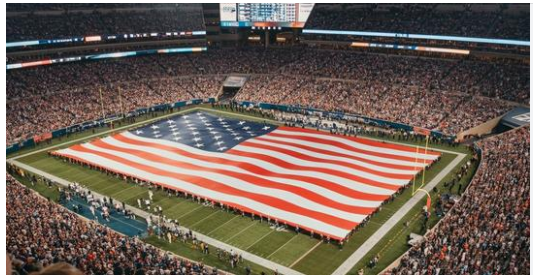The familiar strains of “The Star-Spangled Banner” echo through stadiums and arenas before sporting events, but have you ever wondered why this tradition began? The answer lies in the somber days of World War I, when the anthem became a powerful reminder of national pride and resilience.
In 1918, during Game 1 of the World Series between the Boston Red Sox and the Chicago Cubs, the U.S. Navy band played the national anthem during the seventh-inning stretch. Red Sox infielder Fred Thomas, a Navy veteran, saluted the flag, sparking a chain reaction among players and spectators. The atmosphere transformed into one of unbridled patriotism.

This moment marked the beginning of the anthem’s prominence in American sports culture. By 1931, when Congress officially designated “The Star-Spangled Banner” as the national anthem, the tradition was already deeply rooted.

The NFL mandated the anthem’s playing at every game, and other sports soon followed. Advances in sound systems during World War II made the anthem ubiquitous, cementing its association with American pride.

However, the anthem’s presence at sporting events has sparked debate. Some argue it celebrates military conquests, while others see it as a tribute to fallen heroes. Recent protests and controversies have reignited the discussion.

In 2020, Mark Cuban’s decision to stop playing the anthem at Mavericks games sparked a firestorm, leading to the NBA’s reinstatement of the tradition. The question remains: should the anthem continue to be played at sporting events?
Opinions vary, reflecting individual experiences and beliefs. For some, the anthem represents patriotism and unity; for others, it symbolizes broader American values. As we consider the significance of “The Star-Spangled Banner,” we must weigh its meaning and relevance in modern American culture.
Does the anthem have a place at sporting events? The answer lies in the hearts of the American people, where patriotism, pride, and tradition converge.


